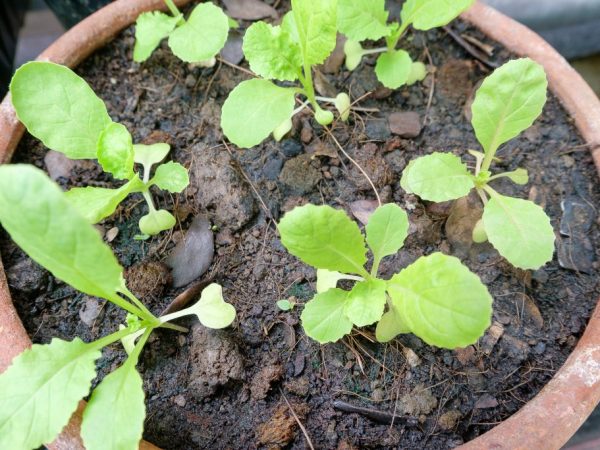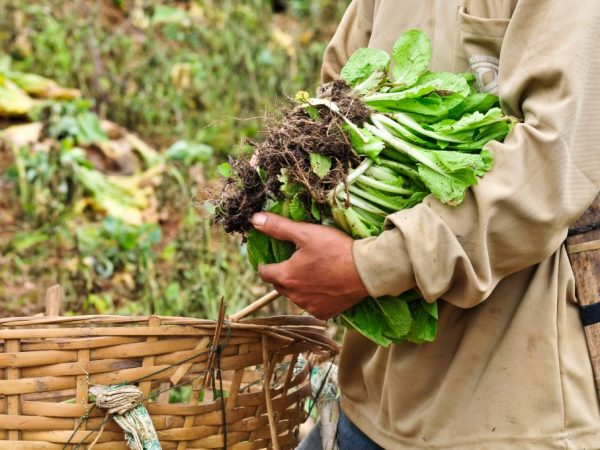Why do cabbage seedlings dry
Often, with inappropriate care, cabbage seedlings dry out. In this case, you need to act immediately, because this is how the symptoms of dangerous diseases appear.

Cabbage seedlings are drying
Why do cabbage seedlings dry
To prevent the leaves of the seedlings from withering, you need to avoid major mistakes during sowing and transplanting. The leaves of cabbage seedlings dry for the following reasons:
- High temperature and dry air. In hot conditions, the seedling withers, and the leaves on the stem dry up. The seedlings are grown at temperatures between 10 ° C and 20 ° C.
- Not enough light. Cabbage needs direct sunlight. Thanks to good lighting, the bush grows and hardens much faster.
- Acidic soil. Due to improperly selected soil, the plant can get sick. Vegetable crops need clean and fertilized soil with neutral acidity. A suitable soil for growing is a soil based on sterile peat or coconut.
- Improper watering. Young bushes require abundant, timely and regular watering.
- Poor prevention and treatment of the bush. So that the seedling does not get sick, and the bush does not sluggish, it is imperative to follow the proportions in calculating the solution when feeding the soil or root system.
- Transplant to a permanent place in the garden. During planting in open ground, some of the roots are noticeably damaged. This is the reason for the yellowing of the seedlings. After 5-6 days, it will take root and will gradually grow
Any stressful situation for the bush causes yellowing in its lower part.
Diseases of cabbage seedlings
When the leaves of cabbage seedlings dry, the plant must be checked for all kinds of diseases. Keela and black leg are considered the most dangerous ailments for vegetables: they deplete the plant. If the plant is infected with a black leg, the stem becomes thin, wilted and covered with dark spots. The disease spreads quickly, so disinfection is carried out immediately.
To save the bushes from the black leg, you will have to remove diseased plants, and spray healthy specimens with a solution of potassium permanganate. This will require 10 g of manganese mixed with 15 liters of water. Pots or boxes with treated seedlings are taken out in a cool room and not watered for several days. These measures help to stop the spread of a dangerous disease.

Carry out prophylaxis before planting
A large number of seedlings die because of the keel. This is a growth on the root system, because of which the bush stops growing and dies. Keela infects the soil, so it is not recommended to plant other plants for 3 years in the place of diseased vegetables. It is impossible to save such vegetables - they are destroyed.
Disease prevention
To prevent plants from dying, professionals recommend following some rules for planting vegetables:
- Before planting seeds, the soil is treated with boiling water.
- The seeds are disinfected. To do this, use a solution of potassium permanganate, where they are kept for about 10 minutes.
- The seeds are not sown too thickly, the seedling cut is possible.
- Watch out for watering: it is important not to water the seedlings, because.high humidity provokes the appearance of a black leg.
Shrinkage due to pest
Cruciferous fleas are considered the main insects that harm vegetable crops. This type of beetle is distinguished by its jumping ability and a shiny body. The parasites harm young cauliflowers. The leaves on it become delicate, curl and fall off. To get rid of insects, it is necessary to treat the bush with chemicals or solutions prepared at home. The best remedies for cruciferous flea beetles are:
- Preparations "Intavir", "Bankol". They are prepared according to the attached instructions, used no later than 20 days before harvest.
- Vinegar solution. You need to mix vinegar of 9% concentration with about 2 tbsp. l. for 10 liters of water.
- Tomato tops. To do this, 4 kg of stepchildren, 1 kg of dry tops are mixed with 10 liters of cold water and infused for 4-5 hours, after which they are heated, then cooled, diluted with water in half and the seedlings are sprayed in the morning or in the evening.
- For pollination, ash, tobacco dust or black pepper are used. When processing with these means, be sure to put on a mask, and on the eyes - glasses for protection. Spraying is carried out with a mixture volume of 50 g per 10 sq. m.
One of the commonly used methods against cruciferous flea beetles is glue traps. Thanks to the glue on the shields, the pests stick and remain trapped. Also, fleas do not like wet soil, so it is recommended to water the beds more often.
Conclusion
With full knowledge of proper crop care, you can easily prevent most vegetable crop diseases. To avoid loss of yield, you need to do preliminary prophylaxis and special hardening of the bushes.


